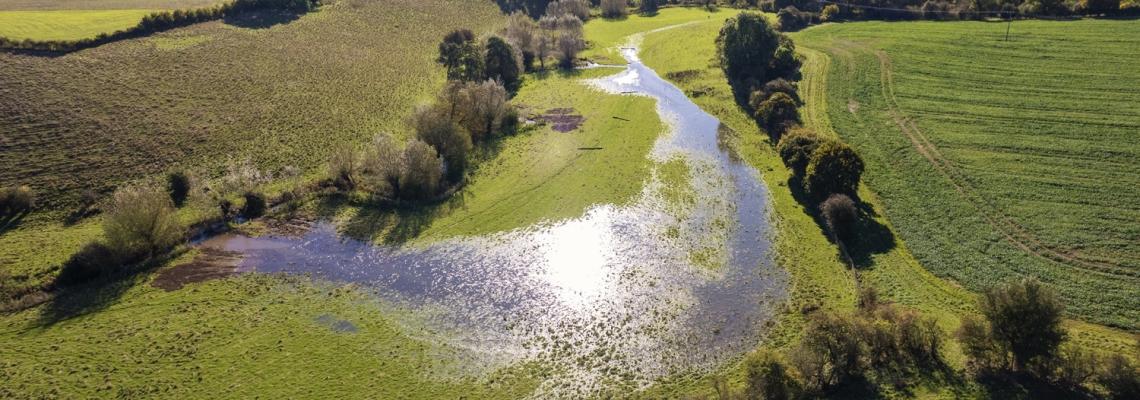Our Ground-breaking Partnership to Rewild River
We've joined forces with the Environment Agency, Thames Water and the Evenlode Catchment Partnership in a unique partnership to help restore one of Oxfordshire’s most important floodplains.

The scheme, which is being overseen by leading project management consultants Atkins, involves using a series of natural barriers to control the flow of water in the River Dorn, in much the same way beavers would have done in the past.
As part of the project, manmade drains have been blocked, fallen trees placed in the water and a series of punches cut into the riverbank to naturally flood into the surrounding water meadows and slow the flow downstream.
It’s the first time the Environment Agency has trialled this joint approach, blending public and private finance to achieve significant landscape change.
“Working alongside the Environment Agency, Thames Water and the Evenlode Catchment Partnership has allowed us to share experience and, together, create a more sustainable, long-term solution,” said our Head of Estates, Rachel Furness-Smith.
“By enhancing the natural processes to effectively rewild the landscape we’re returning the river to the way it would have looked before human interference.
“This will bring back many hugely important benefits to river health, heritage, wildlife, sustainability and flood resilience.
“These sorts of interventions are vital to help us adapt to climate change and improve the quality of our water courses,” she added.
Known as ‘Stage Zero’, the project is the first phase of our wider regenerative programme for the entire Evenlode catchment.
In addition to significantly improving the habitat for wildlife, the project will also help to prevent flooding further downstream and reduce the build-up of silt and nutrients into our iconic Queen Pool, which is threatening to effectively dry up the lake.
“This is a fabulous example of how different organisations can come together to make a real improvement to the natural environment,” said David Gasca Tucker, Principal Environmental Scientist at Atkins.
“As part of the scheme we have also put in place a series of monitoring instruments that will allow us to measure what effect the changes have on biodiversity, the water quality and the flow of the river.
“Naturally functioning rivers and floodplains are powerful carbon sinks and we are also measuring how the floodplain soils respond to wetter conditions and how much carbon we can ‘lock up’,” he added.
The project forms part of our climate pledge to become carbon neutral on scopes 1-3 of the Greenhouse Gas (GHG) protocol across all operations by 2027 and, beyond that, to remove 230,000 tonnes CO2e from the atmosphere by 2050.